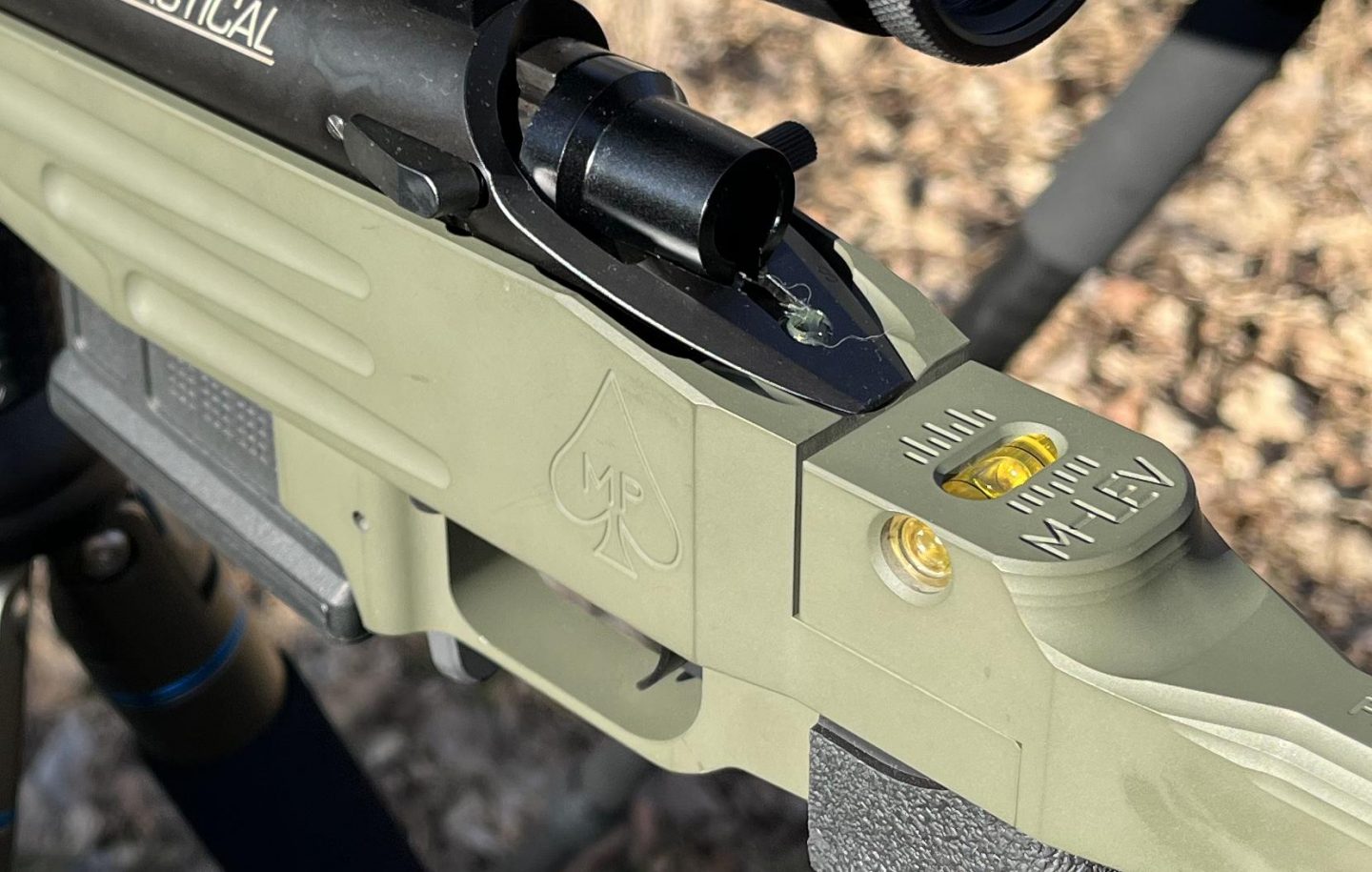Introduction:
Ranges have gotten to be one of the crucial controversial, misunderstood, and poorly suggested matters in precision rifle. So, naturally, I’ll give you some extra recommendation of doubtful provenance to go along with the remaining on the heap. I’ll, nevertheless, throw in some numbers as properly. That ought to make it appear scientific and conclusive. Whether or not it’s or not, it’s my opinion on the subject and I’m self-confident sufficient to suppose it is going to be of assist to someone. A minimum of, it’ll maintain you from making an attempt to hold a plumb line from a tree in your yard or from shopping for some costly and finally ineffective instrument package to degree your scope. As I’m properly conscious and all of the suggestion analytics stuff in Phrase Press retains screaming at me, this text is simply too lengthy. As such, I’ve divided it into three important elements. The primary one comprises numbers and basic data on degree use. You will see that this attention-grabbing and informative and it was enjoyable to jot down. The second half is an tutorial for mounting a scope together with a degree. This was terribly boring to jot down however, judging by questions I get in addition to the weird and tough contortions individuals appear to go although when mounting scopes, I believe it is going to be useful. The ultimate part is on basic lessons of ranges for precision rifle use and my ideas on particular merchandise in these lessons. That is form of like a set of mini-reviews for precision rifle degree merchandise.
Index:
Why your scope should be degree if you make a protracted shot: Degree, by the numbers: Simply how degree are you? : Does Parallax Matter and the way degree do I would like my degree to be? :
Half 2: Tips on how to mount your scope together with a degree
What must be degree on my rifle? : Mounting your scope and degree: Step 1, a visual vertical line: Step 2 for mounted ranges, leveling the extent to the vertical line: Step 3 for mounted ranges, including the scope: Step 4 for mounted ranges, starting to tighten the scope down: Step 5 for mounted ranges, tightening with out rotating: Step 2 for ranges which have adjustable alignment, positioning the scope: Step 3 for ranges which have adjustable alignment, leveling by eye or with feeler: Step 4 for ranges which have adjustable alignment, torque the scope down: Step 5 for ranges which have adjustable alignment, setting the extent:
Half 3: Varieties of ranges and ideas on particular merchandise I’ve used:
What sorts of degree exist and which is greatest for you: Concerns when deciding on a degree: Ranges constructed into the Scope: Sig Tango 6 and BDX collection Scope tube mounted stand-alone ranges: Arken Bubble Degree Mk Machining Extremely Low-Profile Billet Scope Degree Ring mounted ranges: Zeiss Precision Rings Hawkins Precision Extremely Mild Tactical Scope Rings Wheeler Pic Rail Scope Rings Rail Mounted Ranges: U.S. Optics BBL 300 MDT / LRA MV3 Digital Degree, the SEND iT Degree: Ranges Built-in into Shares: Grayboe McRees
Half one: Precision rifle the why, the how, and the numbers:
Why your scope should be degree if you make a protracted shot:
You in all probability already know this, however bullets aren’t airplanes they usually don’t fly, they fall. They achieve this from the second they depart the barrel till the second they hit the goal. If the goal is a good distance off, despite the fact that your bullets are shifting in a short time in direction of it whereas they’re falling, they nonetheless have an excellent little bit of time to fall, and so, fall far. As such, in order for you the bullet to hit the goal, it’s a must to hearth it a bit up in order that when it falls a bit down it finally ends up on track. The additional the goal is, the extra substantial that ‘bit’ up is. On a 1,000-yard shot, you may need 10 yards of falling for the bullet to do, for example, and so you’ll need to regulate the scope 10 yards excessive to hit the goal. That may be a lot. Now, think about you begin to tip that rifle sideways. In case you go the entire approach sideways in order that the rifle is laying on its facet, that 10 yards up will develop into 10 yards to the suitable or left as a substitute. In that case, your bullet would strike 10 yards to the facet of the goal and in addition 10 yards beneath it. It is because you simply transformed the entire elevation essential to right for gravity into windage throwing your shot each sideways and low.
That is, after all, a worst-case state of affairs involving an enormous quantity of drop and a canine with an inside ear an infection quantity of tilt. You get the idea although. If you end up coping with numerous adjustment to compensate for drop, it doesn’t take a lot tilt to finish up approach astray. Subsequent, we’ll see how a lot.
Degree, by the numbers:
To an amazing extent, precision rifle is numbers: distance, velocity, DOPE, wind, and ballistic fashions are all numbers; and we work exhausting to quantify or mannequin these items not simply to the purpose of getting a bead on particular person portions, however to the purpose of even quantifying the diploma of unknown that we’re coping with. We need to know not simply what our resolution is and the place to goal, but in addition about how a lot error we would have in each the horizontal and vertical elements of that resolution. This defines our goal window.
In terms of degree use, considered one of these key numbers is levels of cant. On this case, this refers to what number of levels from vertical you’re holding your reticle (if the scope is correctly made, this will likely be aligned with the changes). Beneath, you will note a desk I’ve calculated for manufacturing unit Berger 140gr Hybrid ammo from my PurePrecison 6.5CM. Values on this desk are calculated utilizing a trigonometric simplification that makes the idea that your diploma of cant is comparatively small.
On this desk, I’ve given you the error at 5 completely different levels of canting the scope. This error is offered in each mils of angular error on the shooter and ft of linear space on the goal for a set of 4 distances that correspond to good spherical numbers of elevation correction. For instance, with this cartridge, 5 mils of elevation correction is critical for a 730 yd shot. In case you unintentionally tilt your rifle by 3 levels on this shot, you may be including ~.26 mils of windage to it which is able to transfer your shot about .57 ft from the place you thought you had been sending it. It is a fairly huge quantity of error so as to add. It’s about two and a half clicks of windage with the 1/tenth mil turrets you in all probability have and, provided that it’s greater than half a foot of linear distance, you’ll almost certainly miss that shot on most typical dimension targets.

However, in case you solely introduce .25 levels of cant on the identical shot, you’re solely .02 mils of angle from the place you thought you had been. That is solely .04 ft, which is lower than an inch. I’m going to guess you’re positive with that.
Whereas I’m at it, I’ll offer you a pair extra tables. The 6.5CM isn’t a foul proxy for high-velocity slippery cartridges on the whole, so I’ll make our different examples cartridges which might be fairly completely different. I’ll do a .22lr desk as a result of all of us love rimfire and it drops just like the lead balloon it’s. I’ll additionally do a desk for the fats, mid-velocity, straight-walled looking cartridge I’m doing an article on later this yr, the 350 Legend.


Simply how degree are you? :
The excellent news is, you’re not a canine with an inside ear an infection. Your mind is a good bit extra difficult than that. Positive, you’ve gotten the inside ear otoliths different mammals have that offer you a real gravimetric sense of vertical orientation. Your mind takes under consideration much more variables than that, although. These embody the orientation of objects you count on to be vertical like bushes and flagpoles, in addition to these you count on to be horizontal just like the horizon. The takeway from that is that you just’re not about to tilt your head if you get a chilly that swells up your inside ear and makes you dizzy in case you shut your eyes and attempt to stroll. Nonetheless, it’s also possible to be fooled if that flagpole you thought was vertical isn’t. Enjoyable truth, I’ve a flagpole behind my home that’s not vertical by greater than a full diploma. It regarded completely vertical to me, nevertheless. I used to be fairly shocked once I considered it by means of the Sig Tango6 5-30×56 with its built-in degree and the 2 didn’t agree. In actual fact, I assumed at first that the Sig’s inside degree should be unsuitable. That was how positive I used to be that the pole gave the impression to be vertical. It was not. The Sig inside degree was proper and the pole truly canted just a little greater than a level from vertical. Here’s a teaser for you. What’s vertical on this image (reply on the finish of the part)?
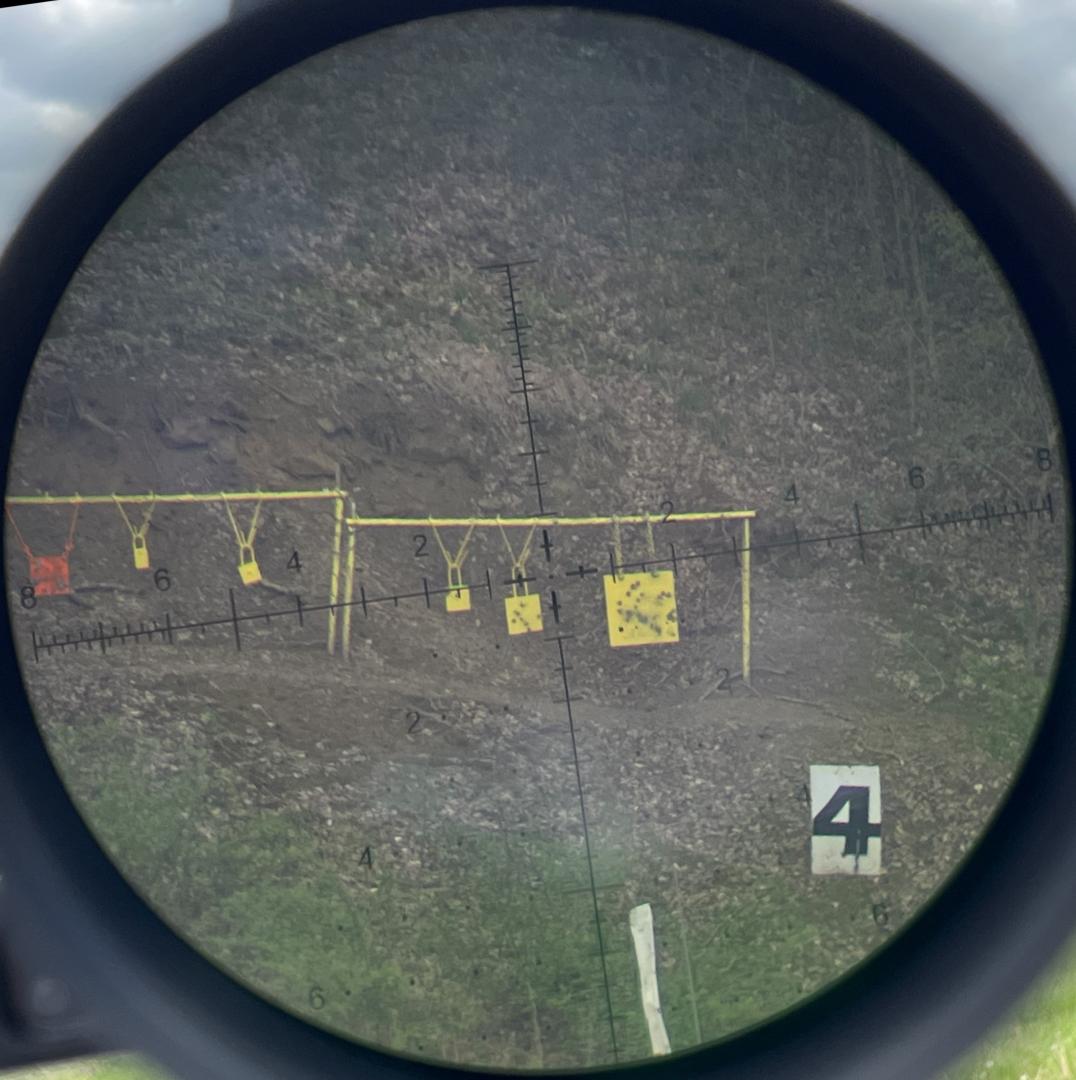
It’s just a little exhausting to inform isn’t it? There are many the sorts of straight traces your mind desires to index off of, however none of them agree with one another. It’s simple to suppose that you’re superb at telling in case your reticle is correctly aligned when you’re capturing off a concrete bench on a sq. vary with good, vertically-oriented, sq. paper targets. Nonetheless, in case you’re bent over at a bizarre angle on a barricade that’s not degree on a hillside that can be not degree capturing at a unique unlevel hillside with a crooked plate rack on it, issues can get much more difficult.
So, simply how good are you at holding your scope vertical? I do not know. What I do know is that if I’m capturing in a state of affairs the place there’s some complexity corresponding to an un-level goal, greater than half the time once I suppose I’ve the reticle degree after which look on the bubble degree to verify, I discover it’s absolutely pegged to 1 facet. Because of this I’m larger than about 2 levels off, as most ranges peg within the 1.5-2 diploma vary. On condition that truth, and the information on how far a shot is thrown per diploma of cant within the above desk, I can see that I would like a degree to shoot my greatest. You in all probability do, too. By the best way, the reticle is completely degree within the above picture. You possibly can confirm this by listening to the orientation of the one level hung plates. The hillside, plate rack, stage quantity, and picture itself are all approach out of degree. Did I throw you off?
Does Parallax Matter and the way degree do I would like my degree to be? :
One of many issues I needed to look at when doing this text was how delicate the common bubble degree is. There’s some variance on this as a result of there could be some variance within the precise form of the vial. I needed to check this as a result of I wanted to know precisely how a lot error I’m letting into the equation if I don’t precisely heart the bubble, however moderately have it touching one of many hash traces in a two-line degree, for example. I additionally wanted to know the way a lot error I add if I’m wanting on the degree just a little from the facet as a substitute of precisely straight on and so introduce some parallax. In spite of everything, a bubble degree is a roundish bubble within a tube whose markings are on the surface. In case you have a look at it from 15 or 20 levels to the facet, the bubble seems to maneuver nearer to 1 line and farther from the opposite.

I’ll deal with sensitivity first as this beautiful a lot solutions the parallax query. I checked out quite a lot of bubble ranges for precision capturing from quite a lot of in style makers. There’s some variance in precisely how broadly spaced the central information traces are across the bubble and in addition some variance in how a lot tube you’re given on both facet of these traces. In my pattern, this variance was not giant, nevertheless.
What I discovered is that with the bubble touching one of many information olines, you’re between about .25 levels of cant and .5 levels of cant on each degree I checked out. That’s fairly delicate. Delicate sufficient that I’d take any shot with the bubble between the hash marks fortunately. On each degree I examined 1 diploma of cant had a hash line touchdown someplace mid-bubble, and on each degree examined, the bubble was pegged to 1 facet of the vial by 2 levels.
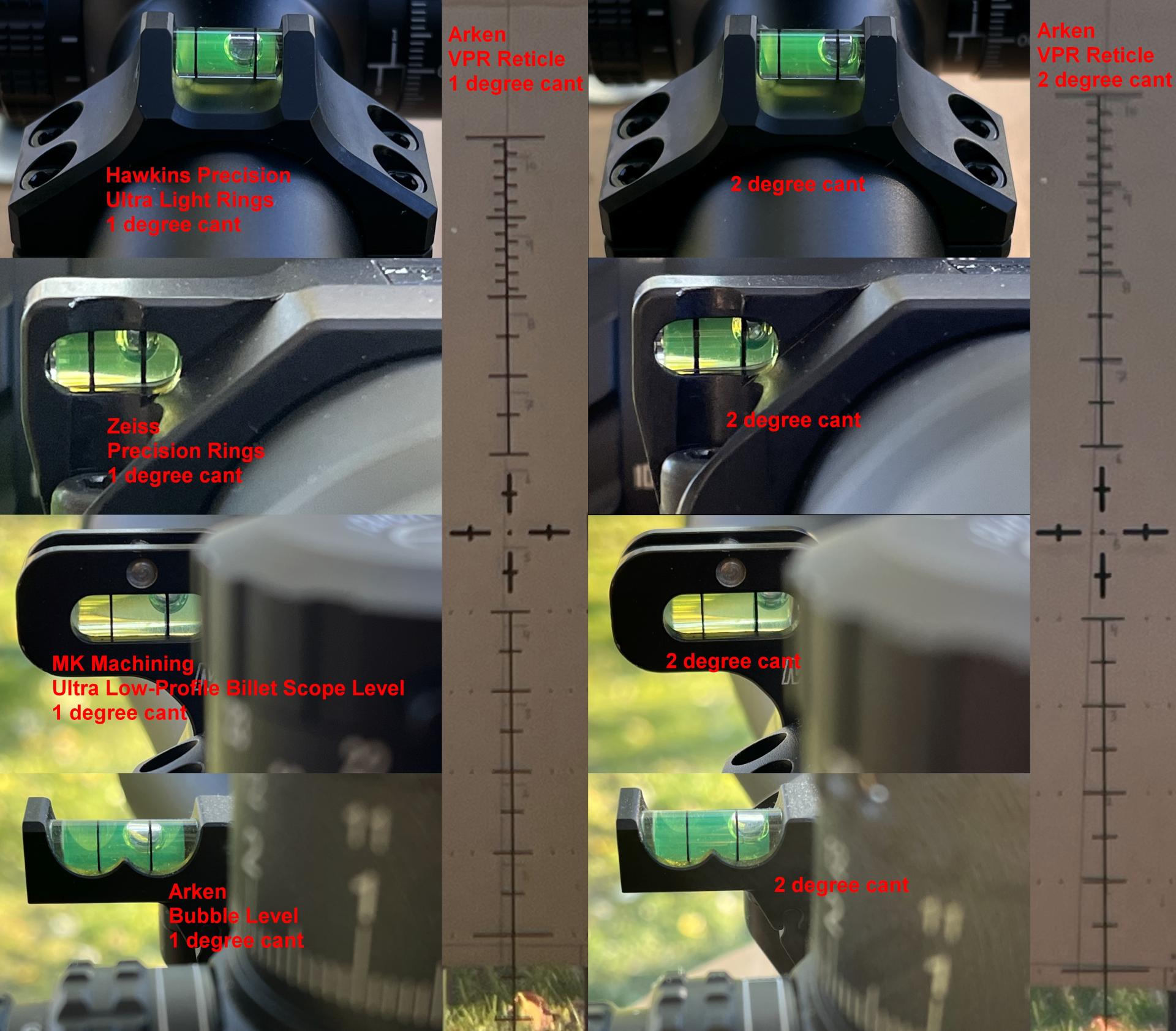
What we study from this testing together with the tables on quantity of error per diploma of cant from the sooner part is that in case your bubble is between the hash marks you’re degree sufficient to ship the shot in virtually all conditions. Equally, you study that parallax will not be a giant concern as the extent is so delicate that you just gained’t be thrown off a lot by being just a little unsuitable about precisely how centered the bubble is between the hash marks.
Half 2: Tips on how to mount your scope together with a degree
What must be degree on my rifle:
Numerous individuals are going to hate this, however right here goes. Your rifle scope’s reticle doesn’t truly must be completely degree with the vertical axis of your rifle inventory or with the highest of your pic rail. Don’t get me unsuitable, I’m not advocating a 45-degree angle right here. In case you try this, you’ll encounter some points as you shoot at completely different distances. I’m additionally not telling you you probably have the gear, corresponding to a rail-mount degree, to not use it. Nonetheless, if had been speaking about +_ 5 levels right here, it simply doesn’t matter. You possibly can eyeball it. You don’t want a flowery scope mounting package and caboodle. Backside line, if the reticle appears and feels degree to the inventory you, it’s degree sufficient.
The explanation for that is once more… numbers. If you’re a full 5% off between the axis of your scopes reticle and the axis of your rifle (you’ll discover this BTW – it’s a loopy quantity to be canted) and you’re utilizing a scope that’s mounted 1.25 inches above the bore line, your bore will solely be offset within the horizontal out of your scope by .109”. You’ll theoretically right this in your 100yd zero resulting in photographs at different distances having some theoretical horizontal error as a result of misalignment of bore and scope in that axis (in actuality you don’t have clicks this positive). At 1,000 yds this error would solely be a whopping ~1”. So yea, it actually doesn’t matter in case your scope reticle is just a bit bit canted to the axis of your scope tube, the rifle bore, and your inventory. You possibly can cease obsessing about it and shopping for a bunch of merchandise to attempt to make it excellent – your eyeballing is ok.
As for the alignment between your reticle (scope changes), bubble degree, and the pull of gravity, that must be fairly darn good although. That is for the rationale we mentioned within the part “degree by the numbers.” Now it’s time to talk about mounting a scope and getting that proper.
Mounting your scope and degree:
I get extra questions on this than in all probability anything. Individuals obsess about it endlessly and lots of even purchase numerous fancy instruments to do that easy job. You don’t want a lot to get the job accomplished proper, although. You first want a degree vertical line at a distance you possibly can see clearly by means of your scope. Then, you want a option to maintain your rifle nonetheless. I get the vertical line through the use of a goal with a vertical line on it and a carpenter’s degree to set that focus on up straight. I don’t do that with a plumb bob as a result of I don’t have a large enough home to set one up far sufficient from me to see it although a scope and they’re tremendous affected by the wind exterior. Ditch the plumb bob considering. A carpenter degree and a goal is simply simpler. Subsequent, you want a option to regulate your rifle’s angle and to lock it down when you get it vertical. I take advantage of a pleasant bipod with a Terry Cross Pod-Loc for this. You possibly can use some form of rifle vice for this, a pleasant capturing tripod, and even some fancy scope mounting instrument that prices as a lot because the bipod however you must actually have an excellent bipod already anyway so we’ll simply use that. These are sufficient instruments for scope mounting although a torque screwdriver and feeler gauges (in case you’re mounting with out a mounted degree) are good as properly.
Step 1:
Arrange the goal a enough distance from the desk or capturing bench you may be leveling the scope on as a way to see it clearly although the scope. Use the carpenter degree to guarantee that line is vertical. Be choosy about this. Get that line good as any error in its orientation will likely be ceaselessly a part of your system.
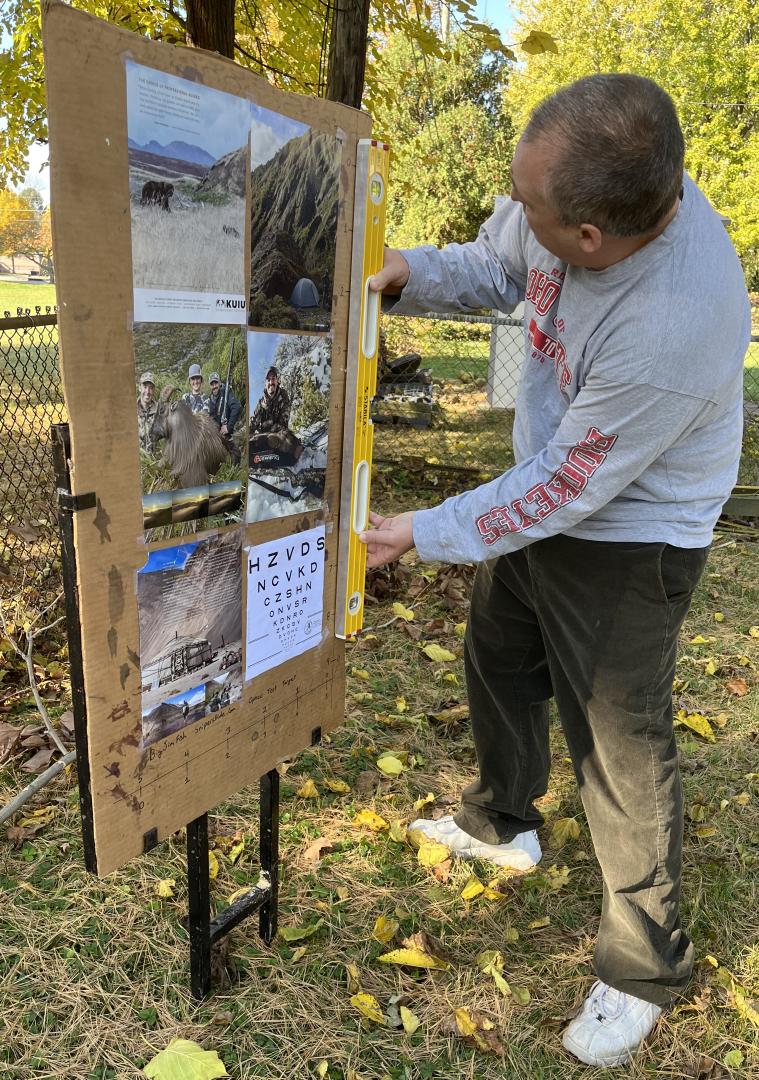
Now we’ll bifurcate the scope mounting course of into two lessons. The primary set of steps will likely be for mounting scopes together with ranges which might be mounted and can’t be adjusted relative to the scope after mounting, corresponding to these built-in into the inventory, these mounted to the pic rail, and people built-in into the rings. The second set of directions are for mounting scopes when the extent is to be added on and adjusted later, corresponding to with a scope tube mounted degree.
Step 2 for mounted ranges:
On this step we degree our degree. In the beginning of this step, you must have your ring bases connected to the rail and torqued to spec with as large as potential a spacing between them that also permits for the scope to be at correct eye aid. Any mounted degree that you may be leveling the scope to must also be connected, corresponding to one which straps to the pic rail. On this step, you level the rifle with the extent connected at your check goal, rotating it till it’s degree, and locking it down with the Pod-Loc. If you’re utilizing rings which have the extent on the highest cap, merely sit the highest cap on the underside cap for this step. You now have the rifle pointed to the goal, degree, and comparatively securely locked in place.
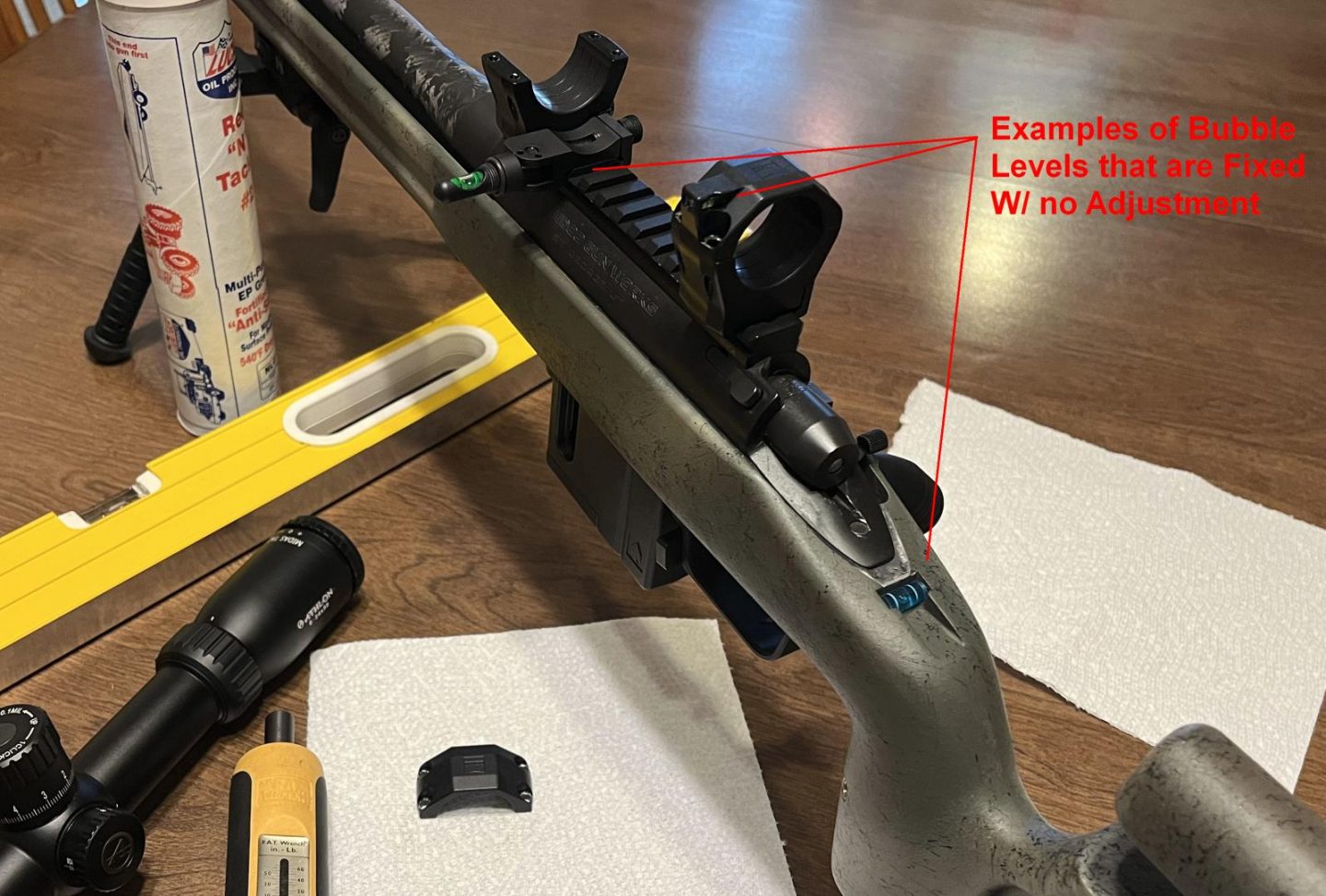
Step 3 for mounted ranges:
It’s time so as to add the scope now. You’ll be making an attempt to not transfer the rifle round a lot on this step however don’t fret an excessive amount of about it. Place the scope within the rings and verify correct eye aid by sitting behind the rifle and shouldering it as if capturing. Place the ring caps on the rings with the identical hole between cap and base on either side of the cap. Put the fasteners in and screw them in till they’re simply barely not touching the highest cap in order that the scope can nonetheless freely rotate. At this level, your rifle is degree and the scope is the right distance out of your eye. Rigorously rotate the scope till its reticle is in excellent alignment with the goal you arrange in Step 1.
Step 4 for mounted ranges:
At this level you must have a rifle that’s correctly degree to the goal and a scope that’s arrange for the right eye aid and in addition degree with the goal. If that’s not the case chances are you’ll have to finely regulate the rifle or scope just a little in order that the bubble reveals degree and the reticle additionally reveals degree towards the goal you arrange. That’s positive, count on to do some positive tuning. As soon as the extent and reticle each present degree, you’re going to begin to tighten the cap screws on the rings. Talking of these screws, they need to be evenly lubed with grease. Don’t run them dry as your torque will find yourself uneven and your scope will probably ultimately come unfastened. I additionally don’t advocate Loctite, as it’s pointless in addition to a PITA in case you ever need to transfer something sooner or later. You’ll first maintain the bit in simply your finger to start out tightening and you’ll tighten simply till you’re feeling the cap screws begin to comfortable the ring cap. You’ll do that in a cross sample, as with lug nuts, and just a bit on every screw at a time. We need to be sluggish and even right here in order that the scope doesn’t rotate in the course of the tightening course of. In case you do it slowly and evenly, nothing will rotate in any respect, I promise. If you’re utilizing a set of rings with the bubble degree within the cap, begin the tightening with simply the cap that doesn’t have the extent. Proceed tightening till the cap screws are finger tight.
Step 5 for mounted ranges:
At this level, the cap screws must be finger-tight on all of the ring cap screws that would not have a degree in them; the gaps between ring caps and the ring bases must be even throughout; your bubble degree must be degree; and your scope reticle must be completely aligned together with your degree goal from Step 1. If any considered one of these items is off, return and repair it. If not, time to place your torque screwdriver on the ring cap screws and begin to tighten them to the ring or scope producer’s advice, usually someplace between 8-18 in/lbs. If you’re mounting utilizing rings with the bubble degree within the cap, I’d put just a bit torque on the non-bubble cap right here, however not the complete quantity, earlier than shifting on to the second cap that has the bubble and beginning to tighten it as properly. You should do that as a result of the scope should not rotate whilst you’re torquing the cap that has the extent. You’re going to maintain the non-bubble cap screws just a bit tighter than the bubble cap till the top of your torque down course of when they are going to each be on the really useful torque in order that the scopes alignment doesn’t get tousled if you might want to re-start and re-adjust the bubble degree cap. That is probably. You’ll torque the entire fasteners just a little at a time in that crossways sample till they’re all to the producer’s spec. At this level, you’ll verify to verify the bubble degree and scope reticle are nonetheless degree and put any witness marks you may want on the cap screws. All accomplished.
Step 2 for ranges which have adjustable alignment:
In case your degree has adjustable alignment, you’re basically simply going to mount the scope in order that it feels degree sufficient after which regulate the extent to have the same opinion with the scope later. So, go forward and put your scope rings on with as a lot area between them as you possibly can have and nonetheless get correct eye aid on the scope after which torque their bases down. Subsequent, get behind the rifle such as you’re capturing and slide the scope forwards or backward within the rings till your eye aid is right. When you’ve gotten completed that, put the cap ring caps on so that there’s an excellent hole between the ring cap and ring base on all sides and put the lubed cap screws in such that they’re simply barely not touching the caps and you may freely rotate the scope.
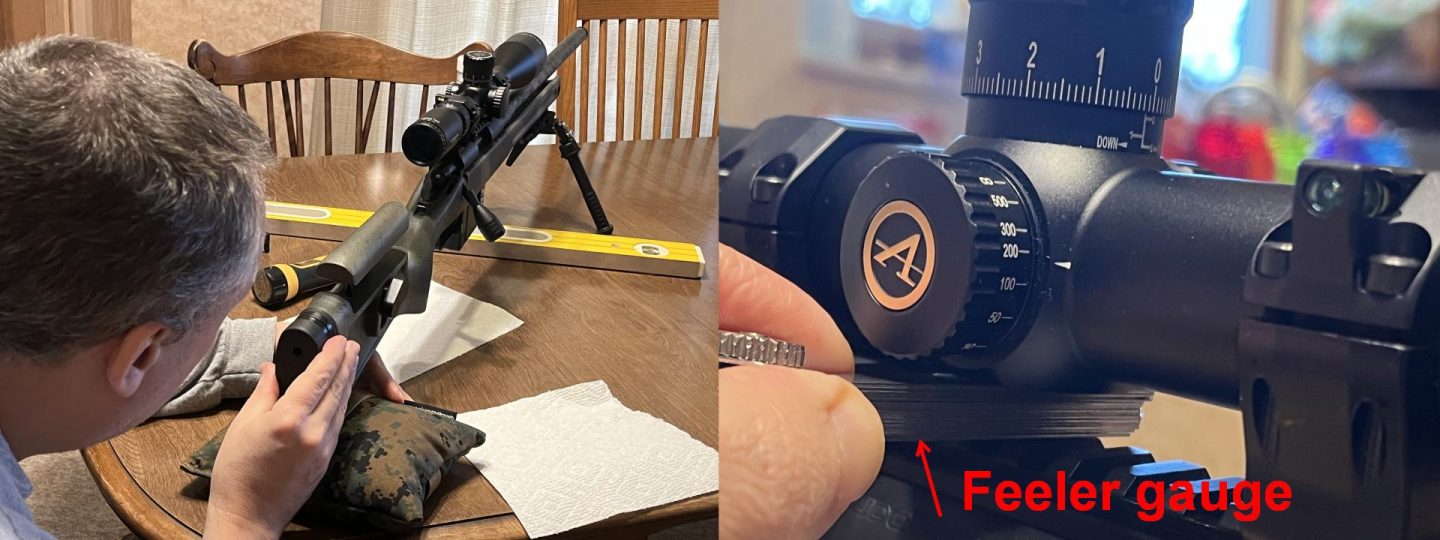
Step 3 for ranges which have adjustable alignment:
Your scope is now on the rifle on the correct eye aid with ring caps on however not tight. You should get the scope reticle to the purpose of ‘adequate’ degree. That is accomplished both by eyeballing or utilizing a feeler gauge. To eyeball you regulate the scope to its lowest magnification and stand behind it as a way to simply see the reticle within the scope. You’ll rotate the scope till it appears just like the reticle is pointing twords the middle of the bolt. To make use of feeler gauges, you’ll slide the right quantity between the flat backside of the scope’s heart saddle part and the flat prime of your rail. You’re going for as small a niche between the feeler gauges and your scope as potential so you possibly can inform if the scope is turned within the rings or not. With both technique, you’re doing all your greatest to get your alignment inside a level or two of right. Ensure to sit down behind the rifle with it shouldered and have a look at your leveled goal although the scope. Does it really feel degree? You’re mainly simply going for it feeling degree right here.
Step 4 for ranges which have adjustable alignment:
Your scope is now on the correct eye aid and feels degree sufficient. Time to tighten down cap screws. Do that with simply the bit in your fingers first and do it little by little in a crossing sample as with lug nuts. In case you do that little by little, the scope won’t rotate and your ring caps will keep evenly gapped. Additionally, ensure you would not have the feeler gauge in whereas tightening screws, as you possibly can bend the scope this fashion. You’ll tighten the screws little by little first by hand after which together with your torque screwdriver till they’re on the ring or scope maker’s really useful torque. That is usually between 8-18 in lbs.
Step 5 for ranges which have adjustable alignment:
Right here is the place we add the extent and align it. The important thing to that is to have your riflescope aligned to your goal whilst you strap the extent on and tighten it down. It would take some trial and error to regulate to degree and tighten down many of the ranges that may be adjusted. Most of them have some form of strap or hinge mechanism the place you’re tightening them on only one facet. They’ll rotate whilst you tighten them. Due to that you find yourself having to start out them just a little off of degree and form of tighten them into degree with some guess and verify as to how far off to start out them. The secret’s to verify to verify the extent of the scope in your goal after you get your bubble degree tightened down to verify it’s nonetheless right. Additionally watch out to not over tighten these tiny little screws that almost all scope tube ranges have. I’ve by no means seen a torque spec on any of them, however it positive looks like lower than even ring cap screws.
Half 3: Varieties of ranges and ideas on particular merchandise I’ve used:
What sorts of degree exist and which is greatest for you:
There are a really large variety of ranges marketed for precision rifle. There are bubble ranges, digital ranges, and even a ceramic ball degree from Accuracy 1st. A few of these merchandise are stand-alone and connect to the rifle scope. Some connect to the scope mounting picitinny rail. Some even connect to the rifle inventory. Plenty of corporations additionally combine a bubble or digital degree into different merchandise which might be already essential items of precision rifle gear, such because the inventory / chassis, scope, or scope rings. I cannot try to search out and catalogue all the probabilities for you. Moderately, I gives you an inventory of concerns when fascinated by learn how to add a degree to your rifle after which discuss a couple of widespread merchandise and the way they stack up.
My record of concerns for ranges derives from the expertise of making an attempt quite a lot of these merchandise and encountering each weaknesses and strengths specifically lessons of merchandise in addition to particular person merchandise.
Concerns when deciding on a degree:
1) Do I’ve to interrupt head place to see the extent and if that’s the case, by how a lot? Degree lean is actual, it is rather simple tilt your rifle over within the course of the extent when wanting over at it.
2) Even when I can keep head place, do I’ve to vary my main consideration focus from the reticle and goal. This would possibly imply focusing a watch on just a little bubble degree vial at an uncomfortable focal distance.
3) Does the extent intervene with my means to see one other management corresponding to a windage adjustment, or does one other management impede my view of the extent?
4) Does the extent stick out in such a approach that it might snag, develop into broken, or harm one thing else?
5) Is the extent simple to see even when lighting is low?
6) Is there play within the mounting of the extent such that it can provide inconsistent readings?
7) What’s the added value of this degree? Is it mainly a free add-on to a part I have to purchase or a stand-alone product or possibility with some related value?
8) Do I’ve a spot to mount this degree in my present configuration or will making this alternative of degree necessitate extra adjustments?
9) Will the extent nonetheless be seen if I’ve to shoot from my weak hand?
Ranges constructed into the Scope:
There is just one place you possibly can put a degree to have it ship its data to you with out you having to take any consideration off of your goal at that essential time when you’re checking your degree proper earlier than the shot – and that place is inside your scope. Built-in ranges are proper up there with toolless adjustment knobs in my pantheon of options I would really like in all my scopes however few producers present. Off the highest of my head, the one corporations I do know of that present a degree indicator within the scope for precision rifle use are Sig and U.S. Optics. Within the case of Sig, it’s an digital degree built-in into the reticle of some fashions, and in U.S. Optics case, it’s a bubble degree inside the attention piece that may be bought as an possibility.
Sig scopes with LevelPlex
A number of years in the past, I did a assessment of the Sig Tango6 5-30x56mm rifle scope with the LevelPlex reticle. I later did an examination of the Sig BDX 2.0 system and the Sierra6BDX scope. Each of those scopes featured Sig’s built-in digital degree system they name LevelPlex. In each instances this method carried out completely. The LevelPlex system options arrows that mild up in your reticle when it’s un-level telling you which ones approach you might want to tilt. The sensitivity of this learn out is adjustable and the potential settings are properly chosen. Suggestions was on the spot with this method and the degrees had been calibrated to be correctly degree with the reticle in each scopes I examined. I discover the LevelPlex system a giant promoting level for Sig scopes, and I believe extra makers ought to incorporate ranges into their long-range scope choices.
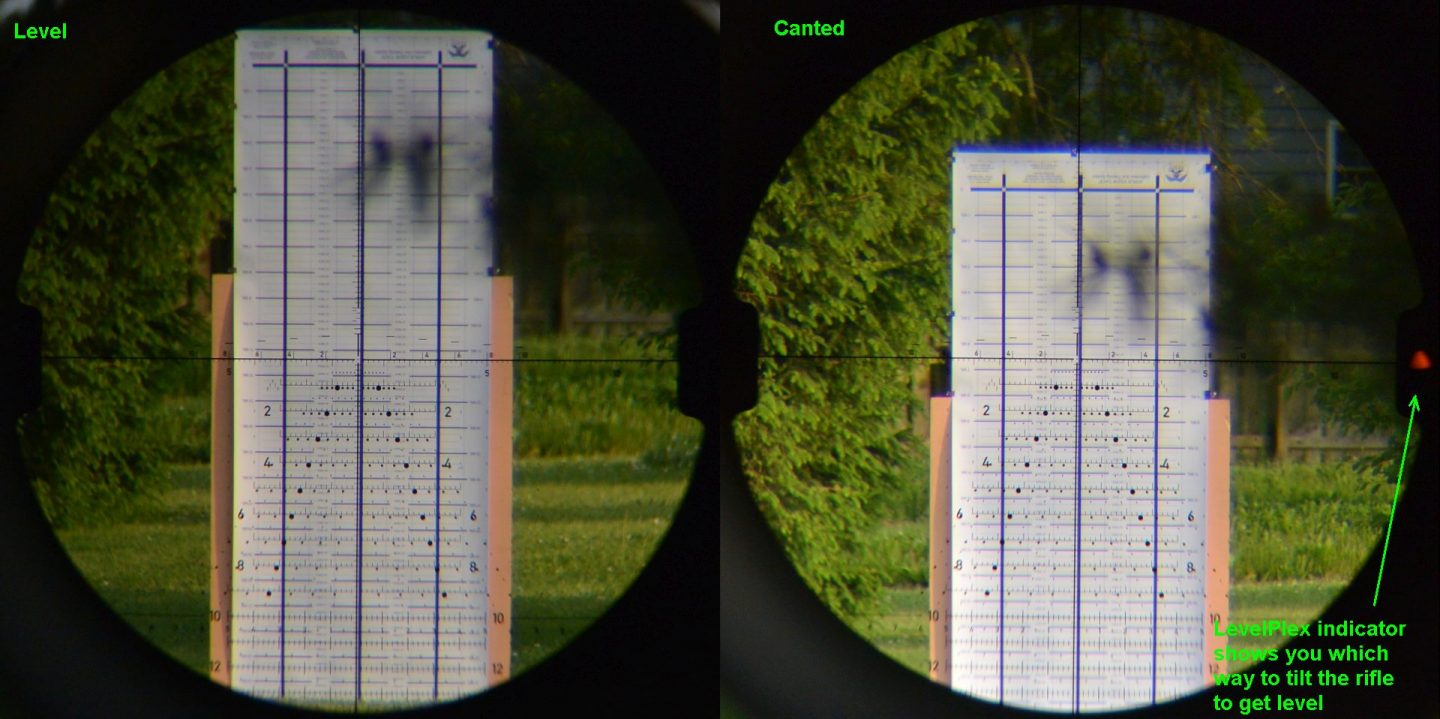
Scope tube mounted stand-alone ranges:
The most typical alternative of degree for precision rifle shooters might be a stand-alone ring-mounted degree, corresponding to these from MK Machining or the one from Arken Optics. These are mounted on the scope important tube, usually on a right-handed shooter’s left within the 10:30 place to be seen with the off eye between the parallax management and the elevation turret. It is a snug place that requires no break in head place, and little shift in consideration focus to make use of. These explicit examples let ample mild in to be properly illuminated even in low mild. The draw back of those choices is that they’re stand-alone merchandise, in order that they do add some value, despite the fact that that’s usually not a lot. Some scope / mount mixtures will even not have room on the principle tube so as to add a strap-on degree within the desired mounting place. These ranges additionally stick out and are fairly simple to snag. I fear that the unsuitable affect would possibly even harm the scope tube since they connect on to it, although this appears much less probably with the plastic model of the MK than the assorted aluminum merchandise. Taking pictures weak hand will even necessitate a head place break to learn these ranges.
Arken Bubble Degree
A lot as is the case with Arken’s Halo scope rings, their bubble degree is of unusual high quality for the value. It makes use of a skinny, versatile aluminum strap to carry it to the scope important tube that has a pivot on one finish and a single fastener on the opposite. Like most tube-based ranges, it’s a little tough to get positioned completely if you tighten it down, however at the very least you solely have to try this as soon as. The Arken degree gives good space for mild to get to the extent and so has good visibility. It is also positioned properly to get an excellent view together with your off eye between the elevation knob and the parallax. All in all, it’s good high quality for the value.
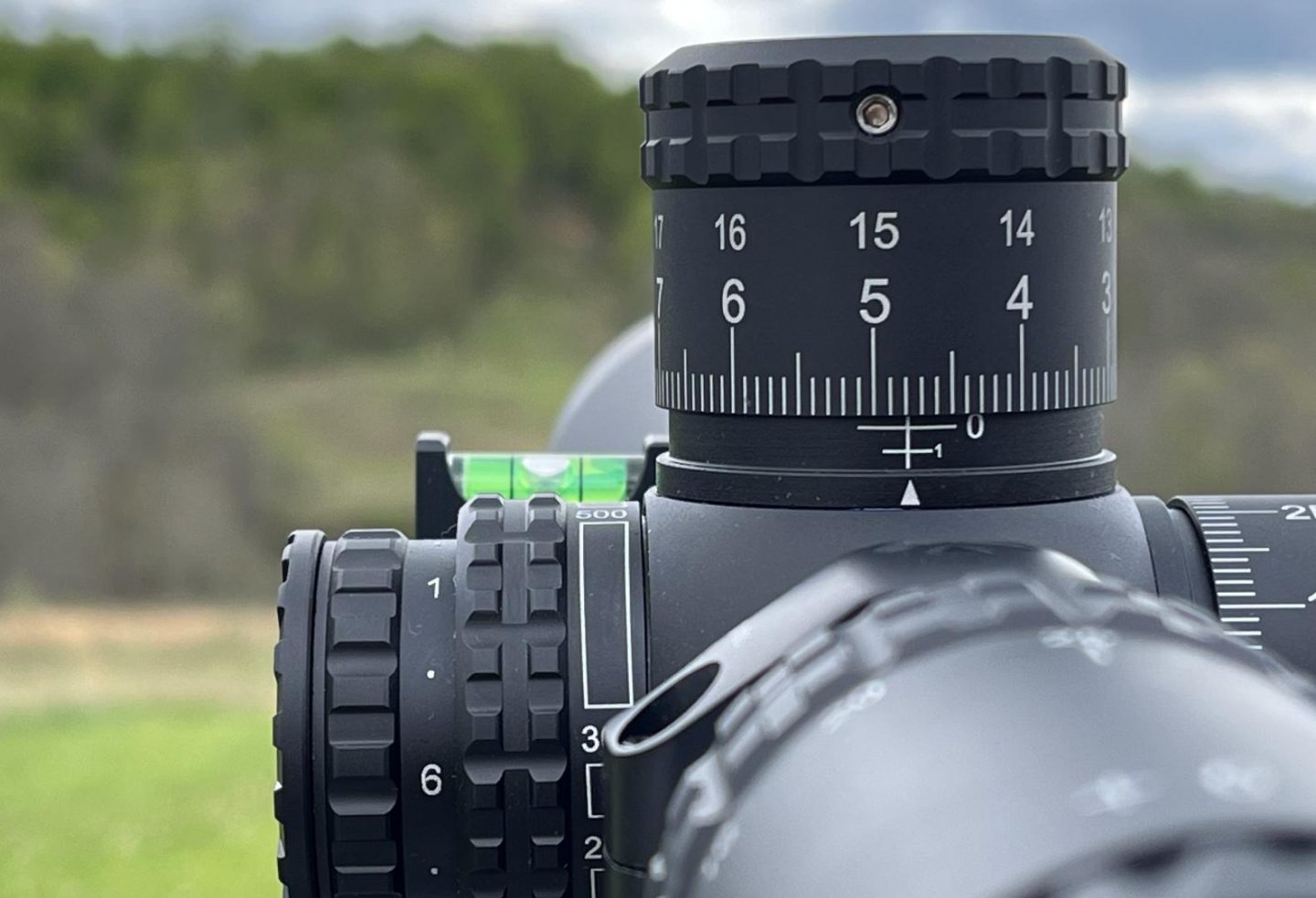
Mk Machining Extremely Low-Profile Billet Scope Degree
This could be the most typical degree utilized in precision capturing right this moment. Its greatest promoting factors are how completely they’ve the peak and orientation set to suit proper in that notch between the elevation turret and the parallax turret in your visible airplane and the way properly the extent picks up the sunshine to be simple to learn. It’s a pleasure to make use of and is about pretty much as good in relation to place and a focus breaking as a bubble degree not inside your scope might be. They’ve additionally accomplished an excellent job radiusing the sides so it’s much less prone to minimize up your rifle case sliding round in it. The extent’s design has a pivot on one facet and single screw on the opposite. Like most tube-based ranges, it’s a bit tough to get completely degree if you’re putting in it. Lastly, the joint on the pivot facet is only a two-part hinge and likes to stretch and torque a bit. I want they’d gone with a unique, extra sturdy hinge design
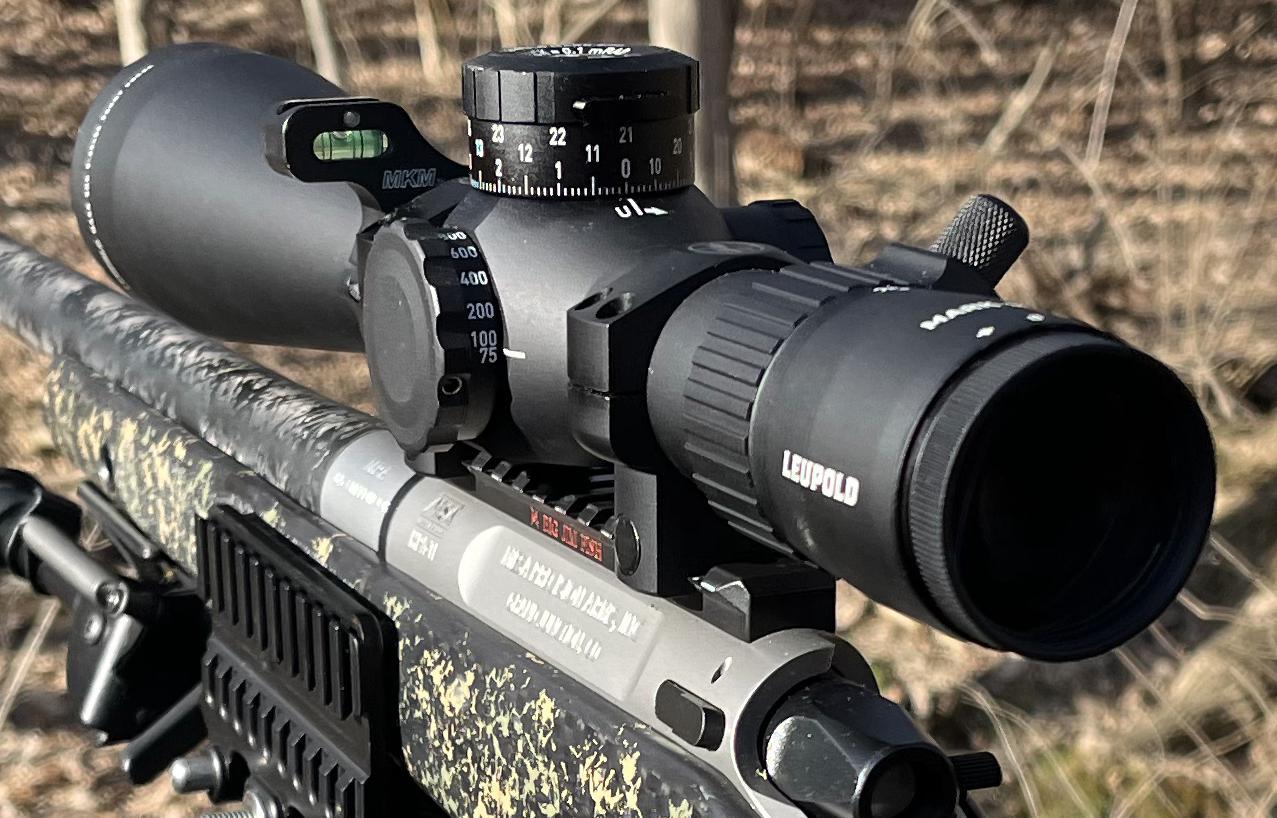
Ring-mounted ranges:
Plenty of makers of rings and one-piece mounts have begun to supply ranges both built-in into the rings or as add-ons that connect to the rings. In lots of instances, these ranges come at successfully no value as they’re built-in into a hoop or mount that’s cost-competitive with in any other case related rings or mounts from different makers. The situation of the bubble degree on the rings or mount varies an amazing deal from maker to maker, with some providing an offset ring cap location normally oriented at 10:30, much like most scope-mounted stand-alone ranges, whereas others mount the extent beneath the scope on the bottom, and nonetheless others mount it centered within the prime cap of the rear ring. In my expertise, places beneath the scope are tough to see, typically requiring a break in head place. Additionally they don’t catch a lot mild and so are tough to see for that motive as properly. The centered prime cap location additionally requires a small break in head place to see, however is a little more snug and higher lit. The offset location has all the advantages mentioned with the stand-alone ranges above however with the added advantages of basically being a free add-on to a mounting resolution you’ll buy anyway and having little probability of damaging your scope important tube in case you snag the extent for the reason that cap screws ought to forestall it from torquing the tube if impacted.
Zeiss Precision Rings
I’ve a pair units of Zeiss Precision rings that I purchased a yr or two in the past as semi-used demo record merchandise. The Zeiss rings have an offset degree within the prime cap that could be very low profile and basically no-snag. They’re very good wanting and well-machined rings that are available in an absurdly good plastic field that you just’re undoubtedly paying for. To be frank, I anticipated to like the rings, however I don’t. They don’t have as comfortable a match to the tube as I’d count on high-end rings to have. Although I’ve not had any points with my scopes shifting in them but, I’ve heard rumblings of this and I discover it believable. The bubble degree on the Zeiss rings can be mounted in a location the place it’ll typically not be seen with out breaking head place whether it is mounted on the entrance ring as a result of the parallax turret will block your view of it, relying on the dimensions of your explicit scope’s parallax adjustment. I’ve to mount it on the rear cap of my ZCO for that reason and the attention aid for it isn’t nice there. There is no such thing as a opening above the bubble vial on the Zeiss rings for mild to succeed in the extent, so they’re additionally very poorly lit. Lastly, the Zeiss web site lists the rings as Sort III exhausting anodized, however the end on mine has come off beneath the cap screws in flakes and has develop into simply scratched in a couple of different areas. These are used demos rings that I purchased, so maybe they had been an early painted variant. I’m undecided, however the end will not be spectacular. All in all, they’re okay rings, however I don’t love them.
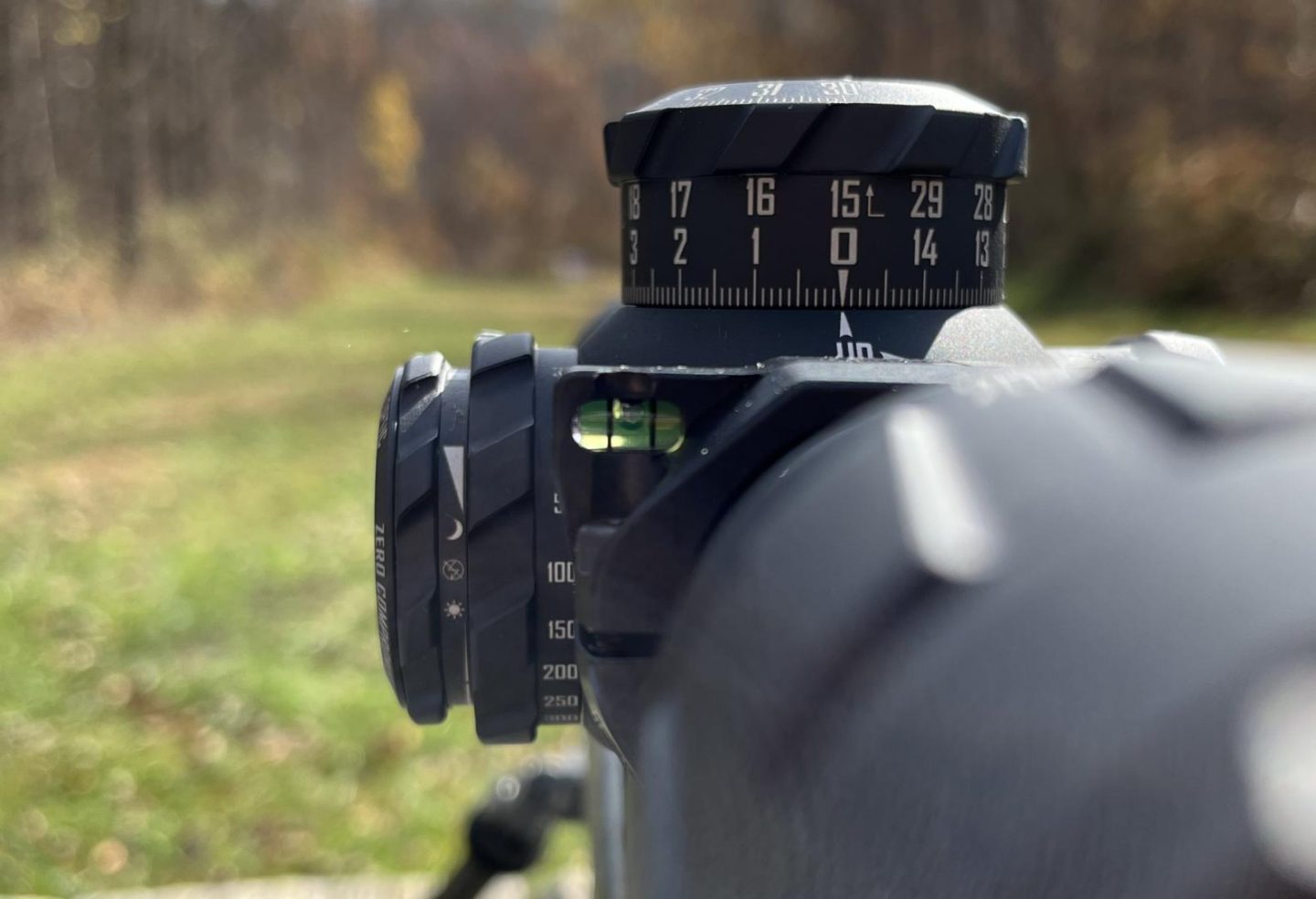
Hawkins Precision Extremely Mild Tactical Scope Rings
On the opposite finish of the spectrum, the Hawkins Precision Extremely Mild Tactical Scope Rings are the nicest light-weight scope rings I’ve encountered from any maker so far. The match is comfortable and excellent on the scope tube, and the machining is great all through with very well-done skeletonizing of the bottom part to avoid wasting weight. Hawkins makes use of substantial dimension torx fasteners on the highest cap and a stable metal press match crossbolt association for the bottom that must be greater than sturdy sufficient for the torque required. Hawkins sells their rings with each a middle cap location for the extent and a excessive offset cap location. The middle location, which I’ve, is low-profile and no-snag, and must be an amazing association for a looking scope whereas the offset cap location appears to be a wonderful placement for precision rifle and competitors use. It ought to sit proper in that 10:30 place the place most aftermarket tube mounted ranges go. In both association Hawkins gives loads of space for the degrees to choose up mild. I count on I’ll purchase extra of those rings sooner or later.
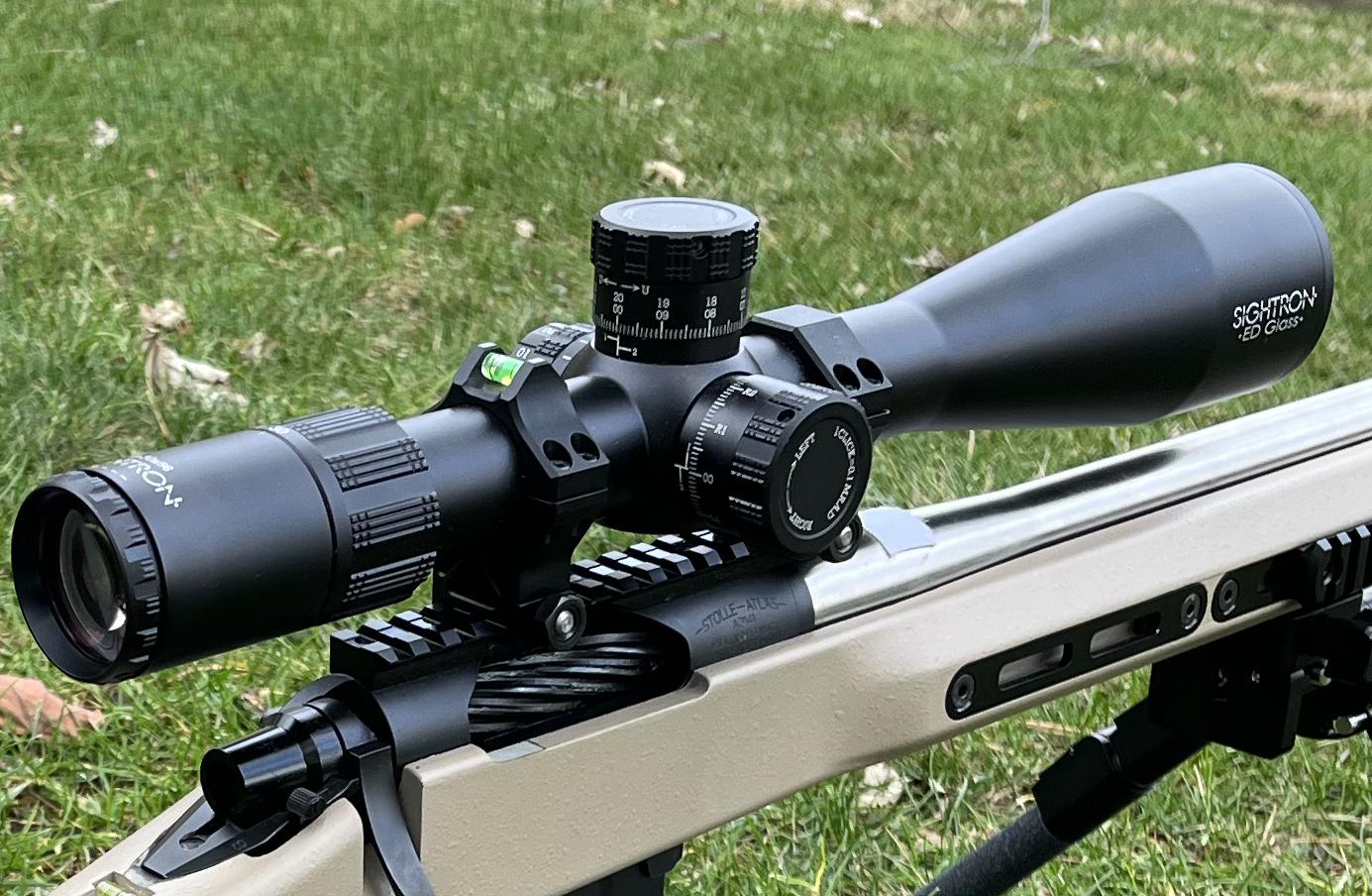
Wheeler Pic Rail Scope Rings
Selecting these up in all probability owes rather a lot to how good the Arken rings had been that come within the “combo pack” you should purchase from Arken if you order their scopes. That acquired me considering I ought to have a look at the standard of different low-cost rings to see if they’ve improved. The brief reply is, no, Arken rings are simply unusually good for low-cost rings. These Wheeler rings are manufactured from a lot softer aluminum that visibly and tacitly stretches an excellent deal whilst you tighten them rigorously. Happily, the clamp for the rail on the backside has a metal crossbolt so at the very least that it isn’t threaded into the gentle aluminum. The extent mount location on the Wheeler rings is low sufficient on the ring that you will want to mount it on the rear ring, as it’ll in any other case be blocked by the parallax turret. This makes it just a little cramped if you attempt to concentrate on the extent. The extent flips out to be used and in for transport, and rests on a pivot such that it may be adjusted with 4 cap screws to degree it relative to the reticle. There’s some slight variance in the place the extent involves relaxation if you flip it out, however this isn’t too unhealthy, perhaps round 1/eighth of a level. All in all, these Wheeler rings are not any substitute for a quality-machined ring. Nonetheless, in case you’re cautious and mild with the cap screws and don’t take them on and off rather a lot, they could work properly sufficient. They’re $50, and the standard is honest sufficient for that.
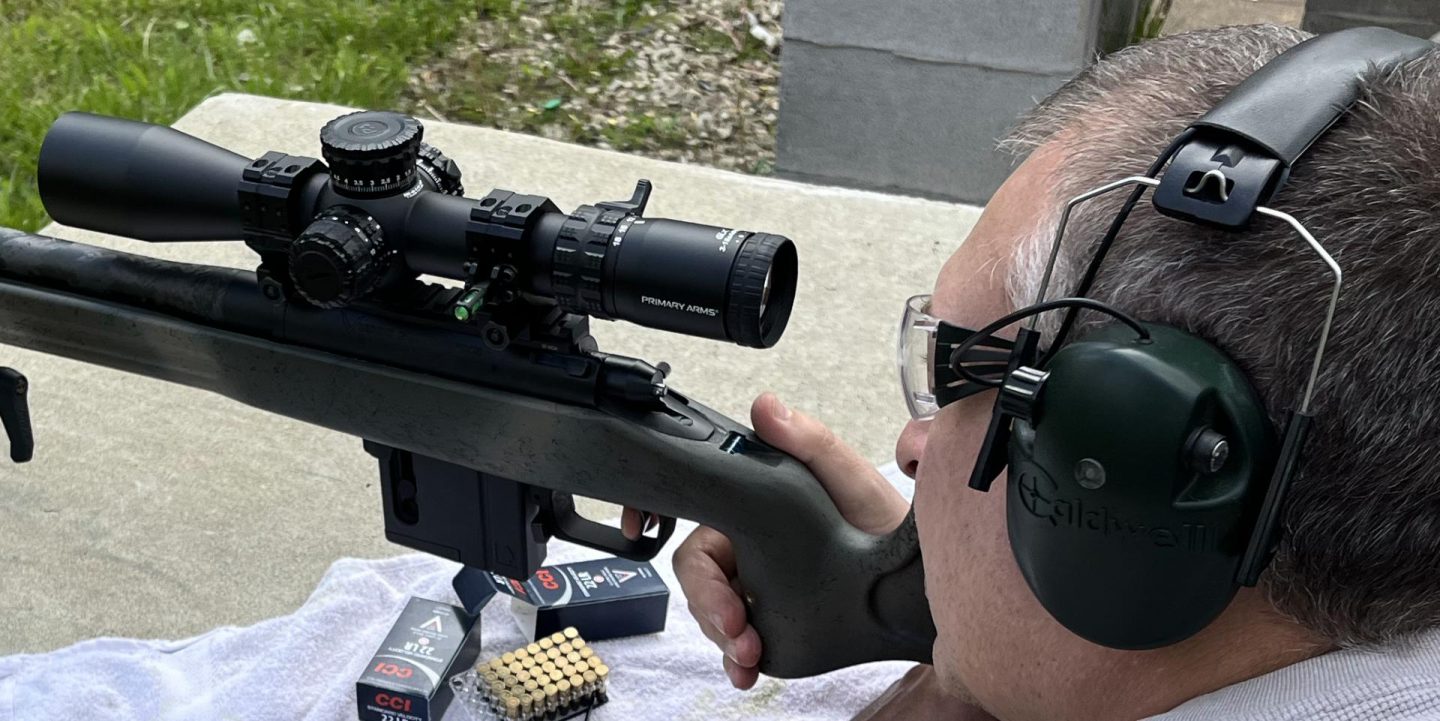
Rail-Mounted Ranges:
The primary degree I ever noticed for precision rifle use was a U.S. Optics rail-mounted degree that merely bolted on to the pic scope mount rail on prime the receiver. The explosion of alternate degree merchandise and mounting places over time has not dampened the recognition of the bolt on pic degree. In actual fact, there are lots of extra makers of rail-mounted ranges right this moment than there have been again then, together with variants which might be digital and a few which might be jointed to flip to the facet out of the best way. A lot of the time, rail mounted ranges can match on the 7:30 place within the discipline of view of your non-dominant eye, proper beneath your parallax adjustment. Right here they provide wonderful eye aid from the shooter such that they are often considered with little break in focus and no break in head place. Along with being an additional value for shooters, the most typical criticism with rail-mounted ranges is that they have an inclination to stay out an excellent bit and snag simply. This may generally be mitigated by the flip-to-the-side options some fashions have, although that always requires additional mounting room to make the most of. Even when not using flip-to-the-side varieties, points with some scope / mounting options not providing a free place on the rail to mount the extent the place you most need it’s nonetheless a typical downside.
U.S. Optics BBL 300
As talked about above, the primary degree for precision rifle I ever encountered was one of many U.S. Optics rail-mounted ranges. These ranges had been approach forward of the sport when it got here to degree use then, and even now, by providing the choice of an inside degree of their scopes for a further $85. That may be a very under-appreciated characteristic that I’d completely pay for in a lot of my scopes. As for the BBL 300, it is a superb rail-mounted degree with a couple of profitable added options. First off, it’s flip-to-the-side for no-snag transport and storage. For added storage safety, it even comes with just a little screw on knurled cap to guard the vial. Lastly, the BBL 300 comprises some brilliant, translucent whitening agent in suspension within the bubble vial. This highlights the distinction between the bubble and the vial considerably making it simpler to see. With the potential exception of value, it’s all wins for the BBL 300. Nice product.
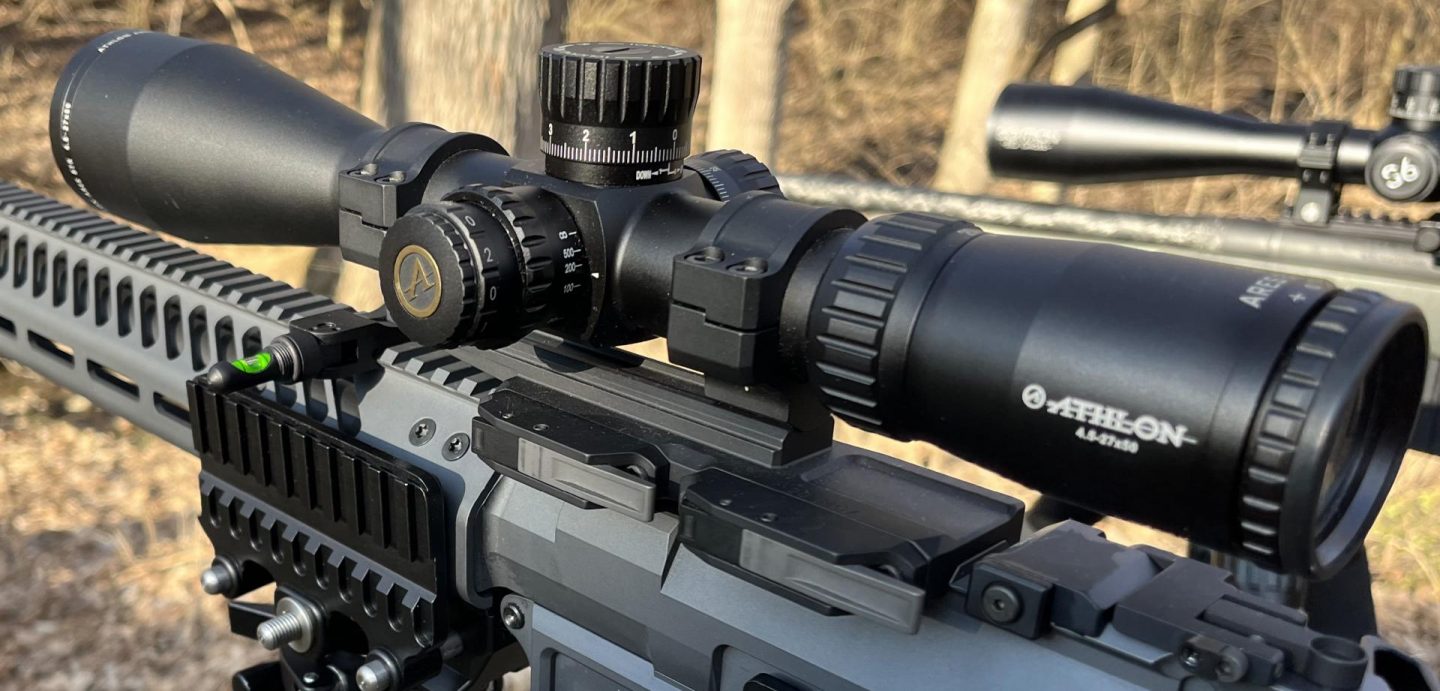
MDT / LRA MV3 Digital Degree, the SEND iT Degree:
The MV3 is an digital degree initially designed by Lengthy Vary Arms and now produced together with MDT. Its digital nature permits it some flexibility in operate that analog merchandise to not have. For example, it may be mounted in 4 completely different orientations. This quantities to left or proper facet horizontal and left or proper facet vertical. Plenty of mounts from quite a lot of completely different makers could be bought aftermarket to help with this, corresponding to a SPUHR adapter, scope tube adapter, and 90degree mount. The extent comes with a easy horizontal pic mount that may be reversed for proper facet placement. Along with mounting flexibility, you even have selections in how a lot sensitivity and LED brightness the extent has. You possibly can set the sensitivity to 0.2, 0.4, 0.6, 0.8, or 1.0 levels, and the brightness is regularly adjustable from ‘you possibly can’t see it’ to ‘it’s exhausting to have a look at’. The extent gives suggestions to the shooter on quantity of cant utilizing 5 color-coded LEDs, with the middle inexperienced mild indicating when you’re within the vary of sensitivity you’ve gotten set the extent for. This color-coding eliminates the necessity to truly focus your eye on the extent and helps you retain consideration on track. An MV3 mounted within the visible vary of your off eye is subsequently one of the best you are able to do so far as protecting your consideration on track whereas utilizing a degree not constructed into your scope. The ultimate benefit the MV3 degree has is that, inside 5 levels every approach, you possibly can reset what it considers degree. That is the large win, as this reset solely takes about 10 seconds and lets you use one MV3 with all of your rifles, which is how I take advantage of mine. Every of my rifles has some form of bubble degree on it with the scope correctly calibrated to that degree. A few of these bubble ranges are nice to make use of, however some, just like the Zeiss rings or degree on the Grayboe Phoenix inventory, aren’t ultimate. When I’m utilizing these merchandise, I put my MDT MV3 on the rifle and 0 it to that current hard-to-read degree. This fashion, I all the time have a wonderful degree system whereas I’m capturing that I simply take off earlier than I pack the rifle up and throw it in my bag. This additionally works out properly because the MV3 is big, stands proud, and would knock into the whole lot if I left it on on a regular basis. That, the actual fact it wants a battery, and its $230 pricetag are its greatest down sides.
For these questioning, I’ve examined the MV3’s means to carry a saved zero over time and although inclement climate circumstances. It remembers its zero positive after being juggled round all day and it continues to carry that zero even in freezing circumstances.
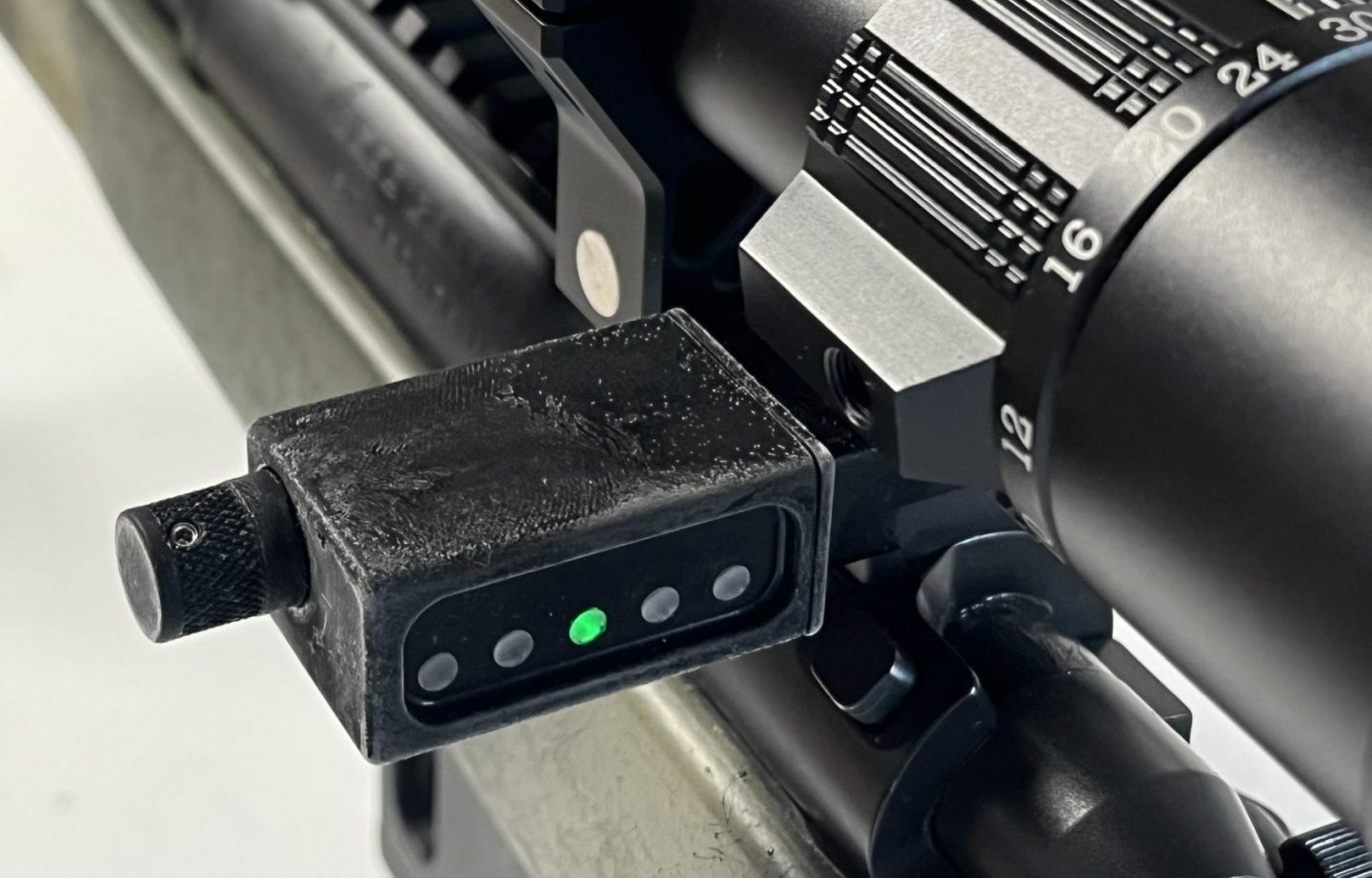
Ranges Built-in into Shares:
It’s possible that the primary precision rifle man to ever put a degree on his rifle put it on or within the inventory. Wooden, being the easily-worked materials that it’s, definitely invitations the modification. Unsurprisingly, quite a lot of makers of shares and chassis programs right this moment embody such a characteristic. Off the highest of my head, I can consider McCrees, Grayboe, MPA, and XLR. All of those makers place a bubble degree instantly behind the tang the place it may be considered with the dominant eye with out breaking head place, although you do have to maneuver your little eyeball an excellent bit and pressure just a little to focus so shut. I additionally bear in mind someone doing a slide-out bubble vial on the left facet of a chassis in some unspecified time in the future, however who it was has skipped my thoughts. As it’s of negligible value, there’s actually no draw back to a inventory or chassis maker including a degree within the tang, and it’s definitely a promoting level for the top person. Whereas these are under no circumstances essentially the most snug or quickest ranges to make use of, they’ve their place.
Grayboe inventory built-in bubble ranges:
Up to now I’ve accomplished opinions on each the Grayboe Ridgeback and Phoenix shares. On the time, each included built-in bubble ranges within the tang, although it seems that the later Phoenix 2 doesn’t. On each shares these ranges had been correctly degree to the motion. The extent within the Ridgeback has a lighter inexperienced tube and is considerably preferable to the darkish blue tube on the Phoenix, which is difficult to see. As with all tang-mounted ranges, it takes a great deal of eye motion and a few eyestrain to see the extent, although you would not have to interrupt head place. These aren’t the best ranges to make use of, however they’re mainly free and correctly calibrated, so who can complain?
Notice: Apparently quite a lot of individuals did complain. Because the time of my Grayboe inventory opinions they’ve stopped integrating bubble ranges into their shares. They acquired too many complaints about ranges being “not degree” or “not matching the extent on the shoppers rings” from individuals who simply didn’t perceive learn how to correctly mount a rifle scope with a degree. I suppose I ought to have written this text a pair years in the past.
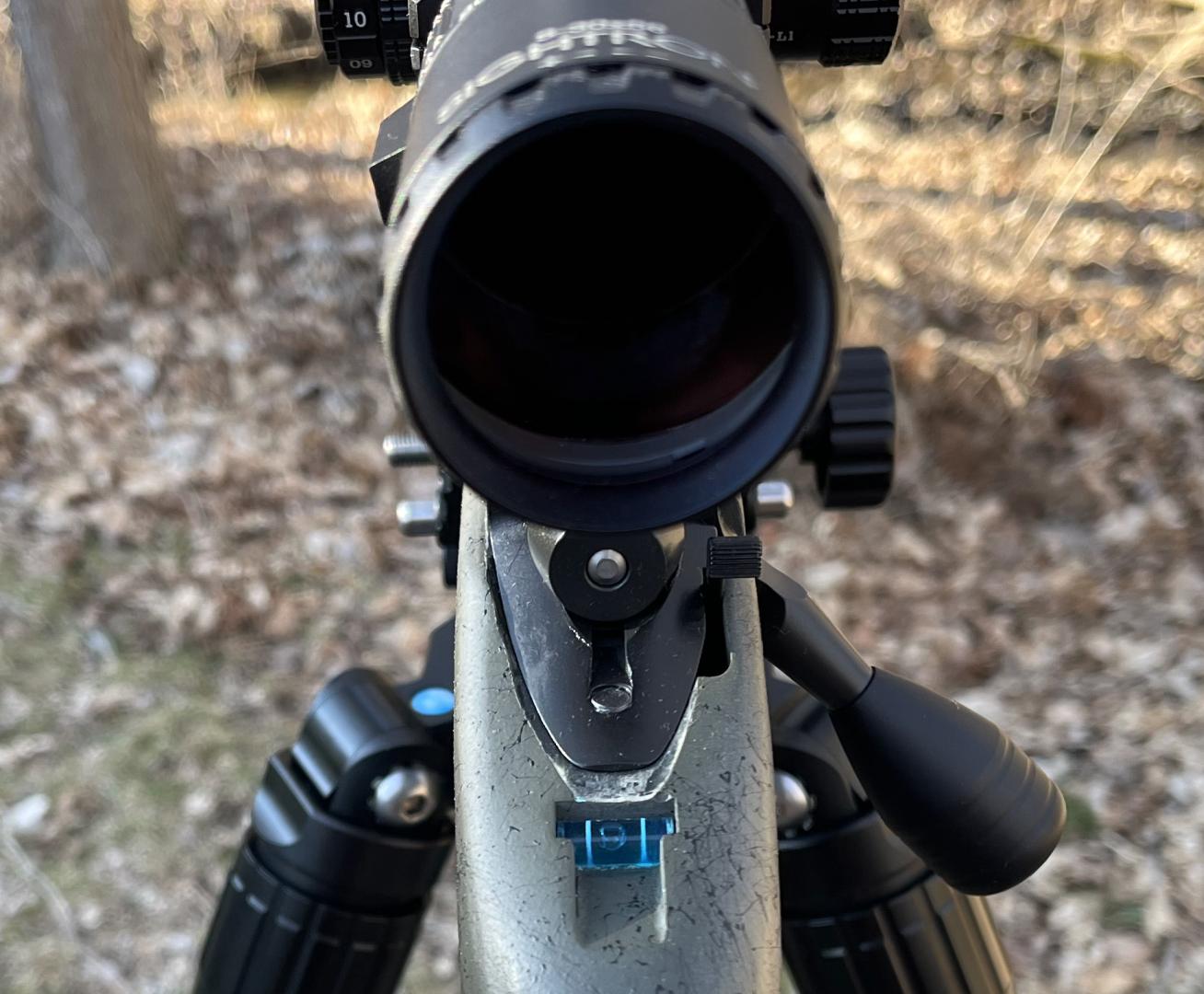
McCrees chassis:
McCrees is the one firm I bear in mind actually pushing a degree within the chassis as a significant promoting level. This ended up being a double-edged sword, as they patented the idea and there was a kerfuffle about mental property. Their degree is good, huge, and brilliant, although, and definitely among the finest integrations right into a inventory or chassis. Like all tang-mounted merchandise nevertheless, you’ll nonetheless pressure your eye an excellent bit when utilizing it.
